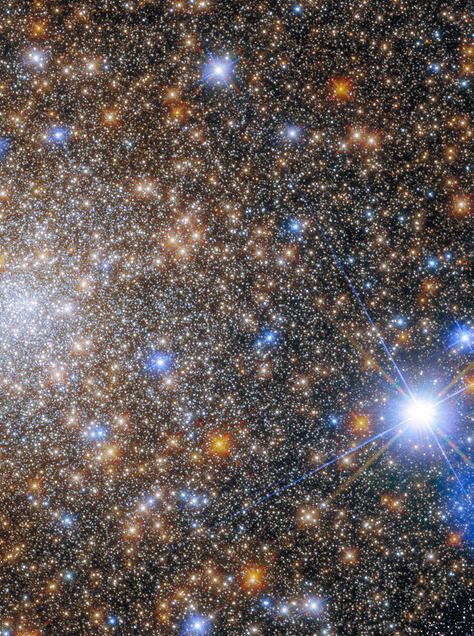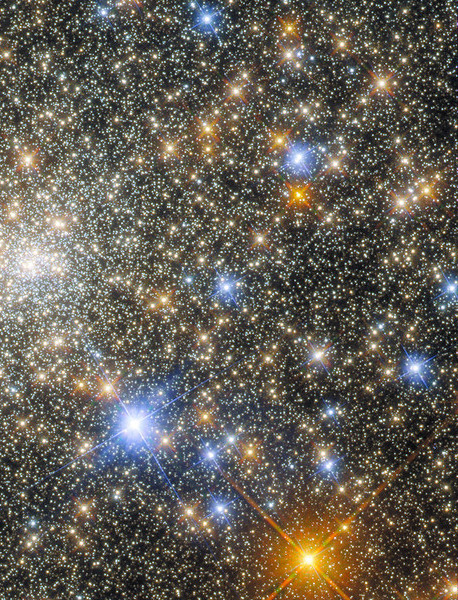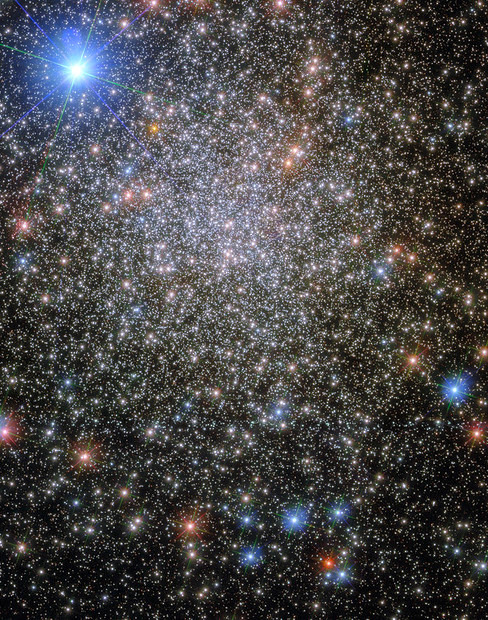Curate, connect, and discover
Globular Clusters - Blog Posts

Say hello to globular cluster 47 Tucanae 👋
This glittery spray of ancient stars is about 16,700 light-years away from Earth toward the constellation Tucana. Globular clusters like this one are isolated star cities, home to hundreds of thousands of stars that are held together by their mutual gravity. And like the fast pace of cities, there’s plenty of action in these stellar metropolises. The stars are in constant motion, orbiting around the cluster’s center.
Past observations have shown that the heavyweight stars tend to crowd into the “downtown” core area, while lightweight stars reside in the less populated suburbs. But as heavyweight stars age, they rapidly lose mass, cool down and shut off their nuclear furnaces. After the purge, only the stars’ bright, superhot cores – called white dwarfs – remain. This weight loss program causes the now lighter-weight white dwarfs to be nudged out of the downtown area through gravitational interactions with heftier stars.
Until these Hubble observations, astronomers had never seen the dynamic conveyor belt in action. The Hubble results reveal young white dwarfs amid their leisurely 40-million-year exodus from the bustling center of the cluster.
Make sure to follow us on Tumblr for your regular dose of space: http://nasa.tumblr.com.
Stargazing Or Die Trying
This evening, I had a solid observing session. Given all the light pollution, and less than perfect skies, I’m still pretty darn proud of how these turned out.


Mercury (photo 1-2): first photo was taken with iPhone XR using the NightCap app. Second was with the Canon M50. This little planet just happens to be my favorite. The length of a day on Mercury is about 59 Earth days, but a year is only 88 Earth days, making it the worst place for Monday to possibly exist.

M44, the Beehive Cluster (partial): these bees aren’t bees. They don’t make honey, but they are known to host these sweet exoplanets known as Hot Jupiters; massive gas giants that closely orbit their home stars.

M13, the Hercules Cluster: in the 1970’s, we beamed a ‘WYD?’ message towards this massive cluster, from the Arecibo Observatory, with our location and our deets. It’s unknown if M13 ever received our message; if so, it left us on ‘Read’.

Arcturus: located in the constellation Böotes, its official abbreviation is Alpha Boo, which is kind of hilarious. The light emitted from this red giant is about 37 years old, and its the fourth brightest in the night sky.
Every photo with the exception of the first one was taken with Canon M50 camera, using a Celestron 6SE telescope. Edited in PS Express.








